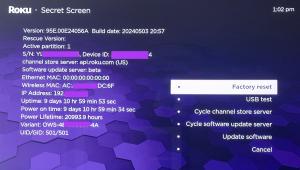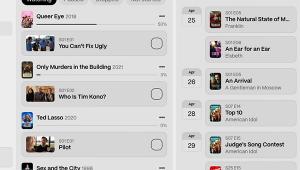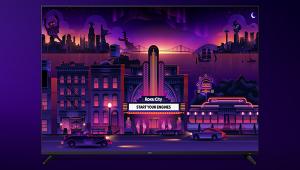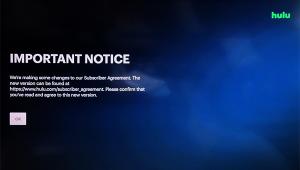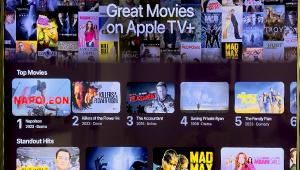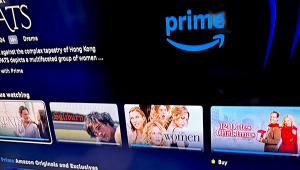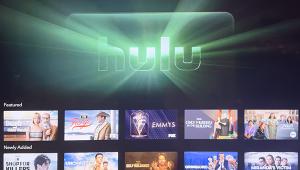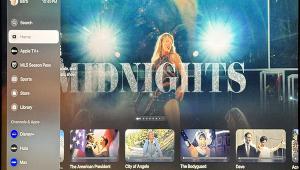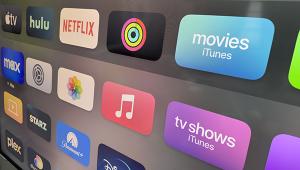I can't help but wonder if the rise of Dolby Vision was a factor - why buy a player without Dolby Vision, but Samsung does HDR10+ instead of Dolby Vision and would not want to pay the license fee. Combined with streaming becoming more popular, refusal to support Dolnby Vision may have been another factor.
Samsung Stops Selling Blu-ray Players in U.S.

The move comes less than a year after Oppo announced that it was ending production of its Blu-ray players.
Samsung had originally announced that it would release a high-end 4K player in 2019 but has now decided to scrap it. A Samsung spokesperson confirmed in an email that the company “will no longer introduce new Blu-ray or 4K Blu-ray player models in the U.S. market.” The company currently lists five 4K models and four regular Blu-ray models on its website, at prices ranging from $80 to $500.
The last new Samsung 4K Ultra HD Blu-ray player was released in 2017 and reviewed favorably in these pages, even achieving Top Pick status.
While Samsung hasn’t issued a definitive explanation, the facts support a trend of increased 4K streaming and diminished use of Blu-ray and DVD players. In its Q2 2018 Total Audience Report, Nielsen counted Blu-ray players among devices that are in the “declining phase of their product life cycle as streaming devices gain prominence” and noted that the number of households that own a DVD/Blu-ray player dropped from 72% to 66% between June 2018 and June 2018.
Then again, as Variety pointed out in a recent article, “While overall disc sales remain challenged (down 11.5% in the third quarter), sales of 4K Ultra HD Blu-ray Discs, which often include a digital copy, soared 68% in the quarter from the same quarter last year, according to the latest numbers from DEG: The Digital Entertainment Group.” But 4K Blu-ray discs account for only 5.3% of total disc sales in the U.S., compared with 57.9% for DVD, according to Forbes.
Perhaps the issue is one of waning demand for disc players. When you can buy a videogame console that plays 4K discs, as the Microsoft Xbox-One X can, why purchase a 4K stand-alone disc player?
Whatever the research shows, the fact remains that most consumers are satisfied to stream movies, especially now that they are available in 4K, increasingly with high dynamic range (HDR) and Dolby Atmos surround sound.
Prices have dropped since 4K streaming movies were first offered for sale at prices over $30. Purchasing 4K movies for streaming now costs about the same as buying an HD movie. Apple iTunes and Google Play Movies and TV will even upgrade movies you own to the 4K verison for free. And purchased digital copies often include special features. Likewise, when a movie is downloaded and stored in a Plex library, related videos that are similar to bonus material offered on DVD and Blu-ray are added. We are at a point where the average consumer simply finds it easier to stream movies, especially now that faster internet speeds make it possible to stream with high quality audio and video.
Still, to quote the famous line from Monty Python and the Holy Grail, “I’m not quite dead yet,” Blu-ray players continue to hang on and become even more upscale. Sony unveiled the high-end UBP-X800M2 4K player at CES 2019, which is listed as “available soon” on sony.com, and Pioneer released the high-end ($1,099) UDP-LX500 4K player last year (watch for our review).
Whether Samsung’s exit from manufacturing Blu-ray players means the end of physical media, or that it is becoming a niche market for video connoisseurs, it certainly puts an exclamation point on the continuing trend toward digital streaming media.
- Log in or register to post comments


Physical media of all formats are going out of style (except some vinyl LP snobs).

You wasted a ton of money on your OLED TV if all you watch on it is compressed 16 Mbps 4K streams instead of the 128 Mbps you get with a 4K UHD disc.

I love listening to my old albums now and then. Part of it is nostalgia, part of it is in some ways they sound better, more depth. Has nothing to do with snobbery. Just plain fun. Your comment however, has a tinge of snobbery

You should correct your article. While the Xbox One X does have 4k blu-ray playback capability, it's a feature notoriously absent from the PS4 Pro. The PS4 (slim and Pro) will only play 1080p Blu-Ray discs.

Have we not learned? Anything you only own in the cloud is subject to the fickle nature of some corporate executive who is trying to increase his stock price so he can cash in his options. Have we not only recently learned of a streaming service that is going out of business? Is not Amazon now in a pi**ing match with Warner? Good luck watching those titles soon. If I buy something, I want it in my hands to do with it what I wish when I wish it. I can rip it for my Kodi system and keep it as back up. Never need much internet that way, just a little for the meta data download. Where I live (middle of nowhere) internet is almost as fickle as those greedy corporate types. Will us hillbillies have to suffer if only streaming is the future? If I put down my cash and purchase something in good faith, there should be some assurity there.

I laugh when I read stories like this, because they assume everyone in the country has 500 MBPS Internet speeds and can stream and download 4K programming. Wake up and smell the non-Starbucks coffee, people!
Also I remember when quite a few companies - Pioneer included - got out of the TV manufacturing business, which is probably the reason why you can't even find a TV anymore at your local electronics dealer. LOL!

It’s the only way you can be sure you’re keeping a keeper.
Streaming is a lot like going to the movies at a drive-in. Convenient, generally easy to get in, but crappy sound and picture. And when the theater decides not to show that movie any more, you’re S.O.L.

It would seem something is afoot in the 4K blue ray player manufacturing circles and it is not only Samsung. After announcing their new players last year which included the UB820 and "flagship" UB9000, after the initial flurry of sales which exhausted their inventory, according to a friend who manages an independent mid/high end A/V retail outlet and has pre-orders waiting for their arrival, in the last three or four months whether it be the large chains or independents, they have no indication from Panasonic when new stock might arrive. Ironically enough, the large chain just recently announced the UB9000 would be available in May(but no sign of the UB820), strange considering the 9000 is almost THREE times the price. All of this happening while at the CES show in January Panasonic announced three new players allegedly coming this fall and they all look like players designated for a lower price range.
Luckily enough, after I purchased a new TV with both HDR10 and Dolby Vision as part of the package I was able to latch on to a UB820 through Amazon and its connection to a retailer in another city that had three of them in stock(they have since all been sold) so I can move my UB900 to another room.
Clearly, it would seem, sales are down since the only other manufacturers that have announced new players is Sony with their "new and improved" X800M and Pioneer with their "high end" LX800 and 500 players similar in priced to the Panansonic UB9000, however, in the case of the Pioneer models, like Oppo, what could be the "kiss of death" for sales is their lack of any streaming services.
It would seem a "wait and see" situation is occurring within the industry, however, it would be a great shame if ALL players from all manufacturers were discontinued. 4K, HDR and Dolby Vision online availability is still a slave to the downloading speed of the ISP and Netflix keeps jacking up their rates.
I still would prefer the "real thing".

Never undersestimate the bandwidth of a truck full of tapes (or discs). Latency sucks, bandwidth great!
In my case, the best internet speed available, from either ISP (yes, only 2 available other than cell phone), is 50 mbit. That's in a fairly pricey suburb. And it assumes that you're willing to pay well over $100/month for it. Most of us get 25 mbit (cable) or 8-12 (Uverse). While that's adequate to stream HD (perhaps even a couple of things at the same time), it doesn't work well if at all for 4K.
For regular programs, I prefer OTA despite the commercials (that's what the mute button and a trip to the kitchen are for). Better picture in general. For movies, I prefer DVD or BD - again, better picture, and I can watch whenever I want without worrying about the data cap.
As for Samsung, I kind of agree with the comment about Dolby. Samsung is invested in its own HDR system, while the rest of the world went with Dolby. In a declining market generally, if you are pushing an unpopular option and don't have the popular one available, you're at a serious disadvantage. Samsung may have just decided to cut its losses early rather than continue without Dolby.
A useful story might be on what options are still available for BD (including 4K) players in various price ranges, without Samsung and Oppo.

If you are referring to the newer HDR standard of HDR 10+, one of the original manufacturers that also jumped on that bandwagon of this format was Panasonic, yet, even they have now incorporated Dolby Vision into their monitors leaving Samsung as the "lone wolf" of major manufacturers without Dolby Vision access.
It is also interesting to note that Panasonic is now the only major manufacturer that has incorporated all three of the HDR formats(HDR10, HDR10+ and Dolby Vision) in both their television monitors and 4K BR players.

If you are referring to the newer HDR standard of HDR 10+, one of the original manufacturers that also jumped on that bandwagon of this format was Panasonic, yet, even they have now incorporated Dolby Vision into their monitors leaving Samsung as the "lone wolf" of major manufacturers without Dolby Vision access.
It is also interesting to note that Panasonic is now the only major manufacturer that has incorporated all three of the HDR formats(HDR10, HDR10+ and Dolby Vision) in both their television monitors and 4K BR players.

